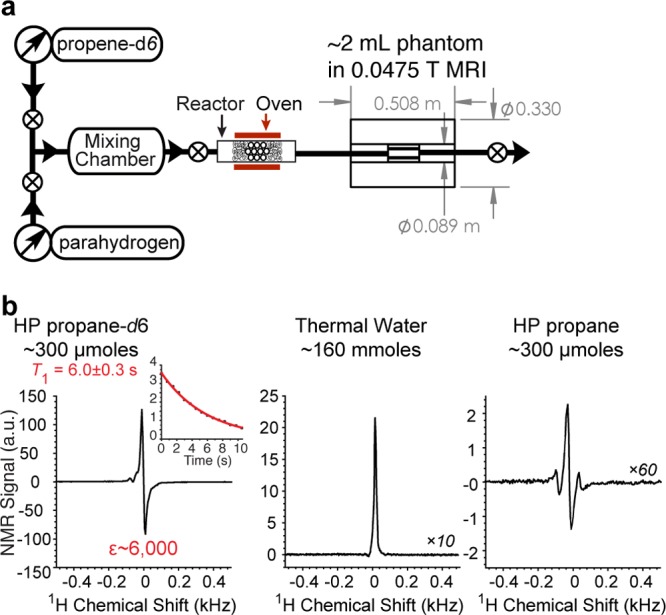Figure 5.

Stopped-flow NMR spectroscopy of hyperpolarized propane-d6 gas at 0.0475 T. (a) Experimental setup diagram and (b) (left) single-scan NMR spectrum of HP propane-d6 after pairwise addition of p-H2 to propene-d6 in Earth magnetic field. The inset shows the decay of HP signal measured with a small-angle RF excitation pulse (α = 7°); (middle) the corresponding spectrum of thermally polarized water, and (right) the corresponding spectrum of HP propane. It should be noted that the effect of 7° RF excitation pulse on magnetization is negligible (>99% of residual polarization is retained after each RF pulse) conveniently allowing in situ direct monitoring of exponential signal decay, i.e., T1 measurement.32,37,44
